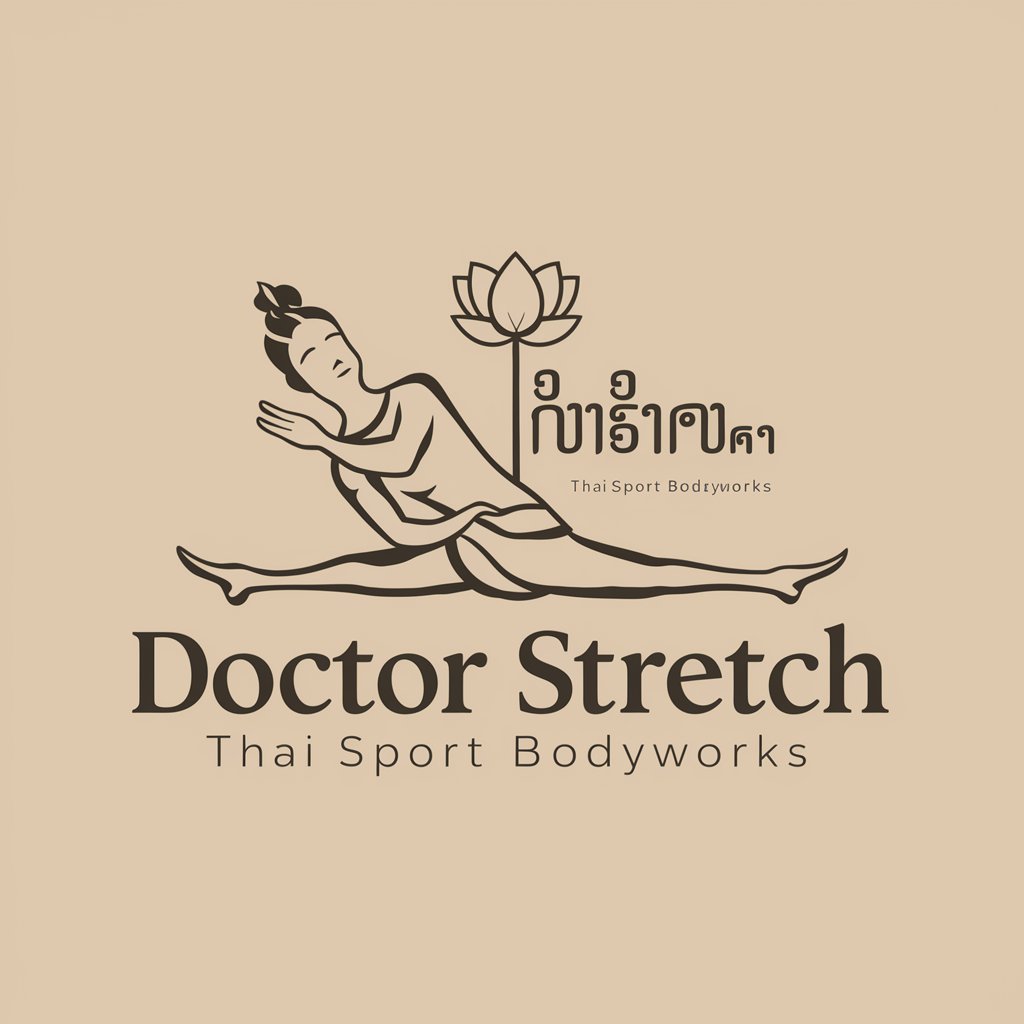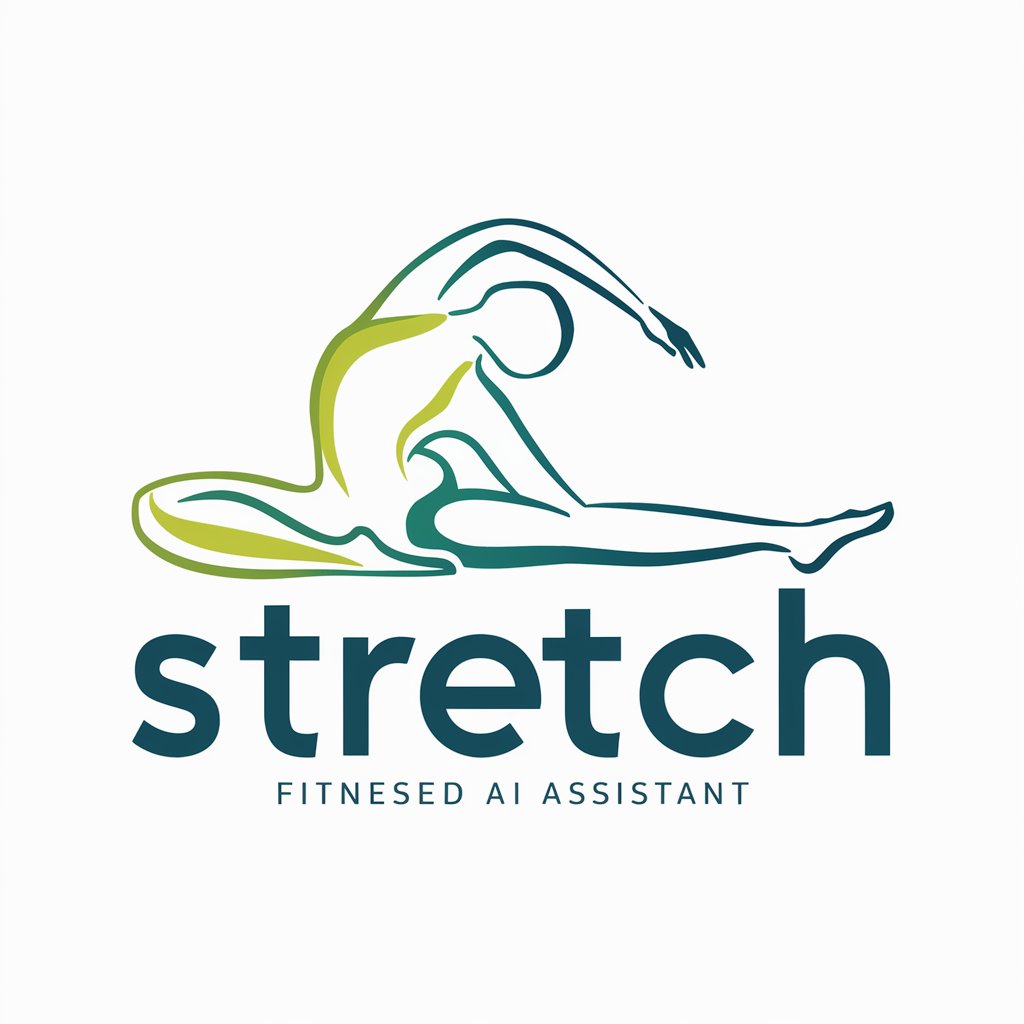
Stretching routines to prevent injuries - Injury Prevention Stretching

Optimize flexibility, prevent injuries with AI
Stretching routine for football player.
Stretching routine for soccer player.
Stretching routine for tennis player.
Stretching routine for Muay Thai figher.
Get Embed Code
Overview of Stretching Routines to Prevent Injuries
Stretching Routines to Prevent Injuries is designed to offer personalized stretching guides tailored to individuals' activities, previous injuries, and exercise habits. Its core purpose is to minimize the risk of injuries by recommending specific warm-up, target area, and cool-down stretches. By considering the type of activity (e.g., running, yoga), previous injuries (e.g., ankle sprain), frequency of activity (e.g., daily, twice a week), and duration of sessions (e.g., 1-hour gym sessions), it crafts routines that prepare the body for exercise, enhance performance, and aid recovery. Examples include dynamic leg stretches for runners before a run or gentle yoga poses for cooldown after a high-intensity interval training (HIIT) session. Powered by ChatGPT-4o。

Key Functions and Applications
Personalized Warm-Up Stretches
Example
Dynamic leg swings and arm circles for a tennis player
Scenario
A tennis player uses these stretches to prepare their lower and upper body muscles for the rapid movements and swings required in the game, effectively reducing the risk of strains and sprains.
Target Area Stretches
Example
Hamstring and calf stretches for runners
Scenario
Runners perform these stretches to specifically loosen the muscles most engaged during running, mitigating tightness and the likelihood of overuse injuries such as shin splints or hamstring strains.
Cool Down Stretches
Example
Static stretching routine involving all major muscle groups for a weightlifter
Scenario
After a weightlifting session, a comprehensive static stretching routine helps in muscle recovery, flexibility improvement, and reduction of post-workout soreness, contributing to better muscle health and injury prevention.
Duration and Repetition Guidance
Example
Holding each stretch for 20-30 seconds and completing 2-3 repetitions
Scenario
This guideline ensures that stretches are performed effectively, maximizing benefits such as increased flexibility and decreased muscle stiffness, which are crucial in injury prevention.
Frequency Recommendations
Example
Incorporating stretching routines into daily workouts or on rest days
Scenario
By advising on how often to stretch in relation to workout frequency, individuals can maintain muscle flexibility and reduce injury risk, even on days they are not engaging in their primary sport or activity.
Target User Groups
Athletes and Sports Enthusiasts
Individuals actively engaged in sports or regular physical activities, who require specific stretching routines to enhance performance and prevent sports-related injuries.
Recreational Exercisers
Casual gym-goers or people engaging in physical activity as a hobby, who benefit from tailored stretching routines to stay active without the setback of injuries.
Individuals Recovering from Previous Injuries
People who have suffered from past injuries and are in the process of rehabilitation or returning to physical activities, needing targeted stretches to aid recovery and prevent re-injury.
Fitness and Wellness Professionals
Coaches, personal trainers, and physical therapists who require a reliable resource to provide clients with safe, effective stretching routines tailored to individual needs and goals.

How to Use Stretching Routines to Prevent Injuries
1
Begin with a no-cost trial at yeschat.ai, accessible immediately without registration or a ChatGPT Plus subscription, offering a straightforward entry into personalized stretching routines.
2
Identify your main activity or sport to tailor the stretching routine accordingly, considering factors like the intensity, common movements, and injury-prone areas.
3
Incorporate a combination of dynamic stretches in your pre-activity warm-up to prepare your muscles for movement, and static stretches in your post-activity cool-down to aid recovery.
4
Follow each stretching routine consistently, adhering to recommended durations and repetitions for each stretch to maximize benefits and reduce the risk of injury.
5
Adjust your stretching routine based on feedback from your body, progressively increasing intensity or duration to further enhance flexibility and strength over time.
Try other advanced and practical GPTs
Santa's Present Helper
Bringing AI Magic to Your Festive Gifting

Future Vision, Present Action
Empowering your future, today with AI.

乳がんサポート&アドバイザー Breast Cancer Support Advisor
Empowering You with AI-Driven Breast Cancer Support

Breast Cancer Consultant
Empowering Your Journey with AI-Driven Support

Bone Metabolism and Breast Surgery Doctor
Empowering healthcare with AI-driven expertise in bone and breast surgery.

Breast Cancer Research Assistant
Empowering treatment with AI-driven insights.

Present Guy
Innovative AI-powered gift brainstorming.

Perfect Present Assistant
Discover the perfect gift with AI-powered personalization.

Prezent dla przedszkolaka na Mikołajki
Smart Gift Suggestions for Preschoolers

Prevent Hullucination
Refine AI Prompts, Enhance Clarity

Quotes from the Past with Present Humor 😀😂
Reviving history with a humorous twist.

The Present Agent
Empowering thoughtful, sustainable gifting with AI

Q&A on Stretching Routines to Prevent Injuries
Why are dynamic stretches important before physical activity?
Dynamic stretches involve movement-based exercises that prepare your muscles and joints for the range of motion required in physical activity, reducing the risk of injury by warming up the body effectively.
How can I tailor my stretching routine to prevent injuries in a specific sport?
Identify the most commonly used muscles and joints in your sport and focus on stretches that target these areas, ensuring a mix of dynamic stretches for warm-up and static stretches for cool down.
What's the recommended duration for holding each stretch?
For dynamic stretches, move through the stretch for 10-15 seconds per repetition. Static stretches should be held for about 20-30 seconds to allow muscles to relax and lengthen.
How often should I stretch to prevent injuries?
Incorporate stretching routines into your daily workout regimen, with dynamic stretches before and static stretches after physical activity, to maintain flexibility and reduce injury risk.
Can stretching routines improve performance in my sport?
Yes, regular stretching can enhance flexibility, range of motion, and muscular balance, leading to improved performance and decreased likelihood of injury in sports and physical activities.





